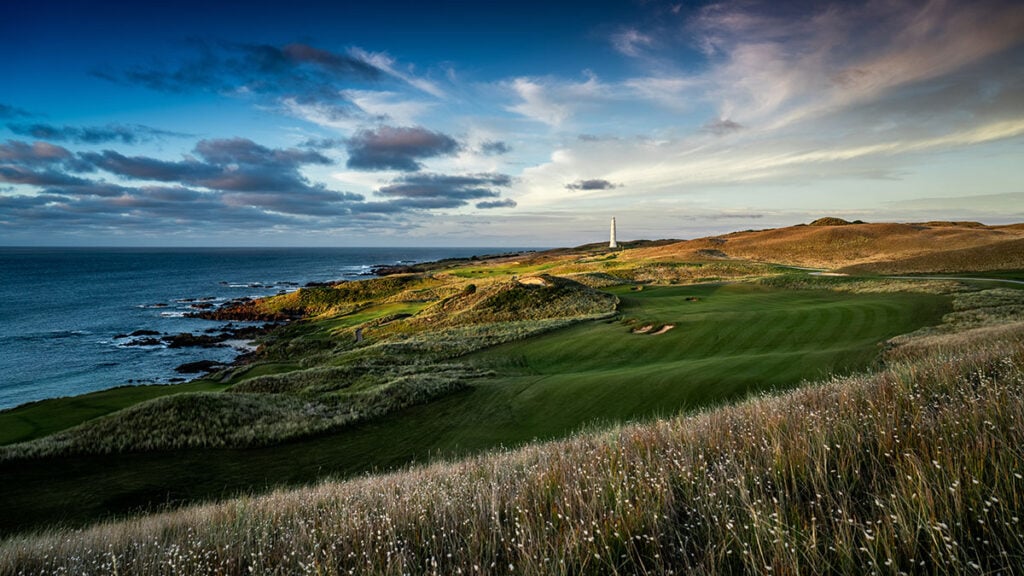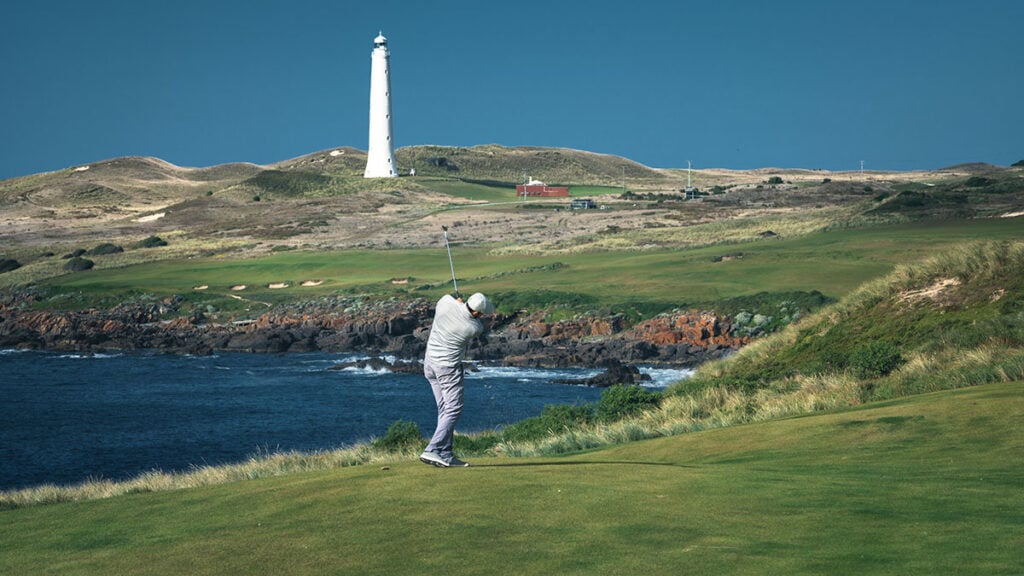The venue could hardly have been more appropriate. Just a few hundred paces from where Seve Ballesteros holed his most famous putt to win the 1984 Open Championship, a “celebratory” screening of “Seve” was shown Wednesday evening at the New Picture House Cinema in St Andrews. Produced by the R&A, the 90-minute documentary charts the life and times of the late, great Spanish golfer, who died in May 2011 at age 54 after an 18-month battle with brain cancer.
All the great moments are recorded, of course. The 1976 Open Championship at Royal Birkdale, where a 19-year-old Seve finished second to Johnny Miller, is there. So are the five Major victories that followed, as well as the resurrection of the Ryder Cup matches in which Ballesteros played such a pivotal and important role.
But this is much more than a mere celebration. While the absolute truth behind any public persona is all but impossible to reveal, the ups and downs of life Seve-style are not concealed. His daughter, Carmen, laughingly hints at her father’s propensity for womanising. His fondness for money – the result of a tough, impecunious upbringing – is recalled. And the conflict that pervades the on-going relationship between Seve’s former wife (also Carmen) and her three children with Seve’s three brothers, Manuel, Baldomero and Vicente, is acknowledged. Significantly, only Manuel appears on-screen to speak of his youngest sibling.
“They [her uncles] didn’t want other people to get involved in his life, his businesses,” says the younger Carmen. “They didn’t let him be himself. He was very controlled. You could tell he felt very, very trapped.”
Ed Barner, Seve’s former manager, goes further.
“Seve didn’t trust many people,” Barner says. “Manuel protected him. But the other brothers manipulated him. They weren’t always operating in Seve’s best interests. He had a depression issue. It was related to being the last of a bunch of boys who were hard on him. There was no question of his love for his brothers. But there was also no question they had been brutal on him growing up.”
Still, it would be straying far from the truth to label this 90-minute production as some kind of tabloid-style hatchet-job. The presence of the two Carmens and Seve’s younger son, Javier (who, with his sister on the bag, is partners with R&A chief executive Martin Slumbers in this week’s Alfred Dunhill Links Championship) at the screening indicated their strong approval of the content.
Which is gratifying. On the golf course there is so much to celebrate about a man who is, no question, the most historically significant European golfer of the past 100 years. This was a man who rose from a two-storey farmhouse in the village of Pedrena in northern Spain – the heating in winter provided by the presence of cows on the ground floor – to become one of the most exciting talents the game has ever seen.

One-by-one, Seve’s rivals lined up to pay tribute. Talking of the time at the 1991 Ryder Cup when he and Chip Beck lost twice to the legendary combination of Ballesteros and Jose Maria Olazabal, Paul Azinger was moved to comment: “I made seven birdies in the second match and lost. Seve broke my heart that day. I think he liked that.” Tom Lehman, who defeated an all-but-broken Ballesteros at the 1995 Ryder Cup, calls his opponent’s initial performance that day, “the greatest nine holes ever played”.
It is, however, the words of Seve’s fellow Europeans that stick most vividly in the memory (although the assessments of former Golf Digest editor Jaime Diaz, which run through the film, add much perspective to the narrative). Both Bernhard Langer and Nick Faldo are openly emotional when talking about their old rival.
Faldo calls Seve “a unique animal”. “He had the game, the passion, the skills, his own panache, his own swagger.” But it is the memory of the hugs they shared at the end of the 1987 and 1995 Ryder Cups that stick most vividly in the six-time Major champion’s mind. “He called me a great champion,” said Faldo, his voice breaking. “That meant a lot.”
The normally stoic Langer is especially poignant, his regret palpable. Seve died before they could develop the true friendship he had hoped for in their later lives. Langer told of how he had tried to get past their innate competitiveness more than once. “But Seve wasn’t ready,” said the two-time Masters champion, tears in his eyes. “And now it is too late.”
There was time, too, for a little humour along the way. Barner tells of how one week before he would win the 1980 Masters, Seve met the then-British Prime Minister, Margaret Thatcher. Trouble was, the member of parliament making the introductions got a little confused.
“Prime Minister,” he said. “Meet the Open champion, Ballerina Sevesteros.”
“Nice to meet you Ballerina,” came the equally ignorant reply.
Seve’s often-fractious relationship with America and the PGA Tour is touched upon. “Many times,” the young Spaniard would sit in locker rooms and overhear fellow players speak of how he was “coming over here and stealing our money.” But those were the words of the mediocre and the bitter. The “real” golfers (Phil Mickelson is just one who adored Seve and his style of play) knew greatness when they saw it. As did Seve himself.
In the movie, Gary Player talks of winning the 1978 Masters and playing the last round alongside a still youthful Ballesteros. When Player holed the winning putt, Seve ran across the 18th green to hug his fellow competitor. Yes, it was the mark of a true sportsman recognising excellence in another. But he was already thinking ahead.
“Gary, Gary, you teach me how to win the Masters,” he said as the pair embraced.
In conclusion, perhaps the most fitting tribute comes from Miller, the man who saw up-close the then-unknown 19-year-old who was staying in a modest bed and breakfast with his brother, who spoke no English, who had a caddie who knew nothing of golf, who had spent the evening before the final round of the 1976 Open in a local disco and yet still thought he was going to win.
“I loved that guy,” he said of Seve. “He was amazing for the game of golf.”
Indeed, Johnny. We all did. And we all thought he was.
• • •
“Seve” can be streamed online in Europe at Rakuten TV. Distribution in Australia is still pending.



